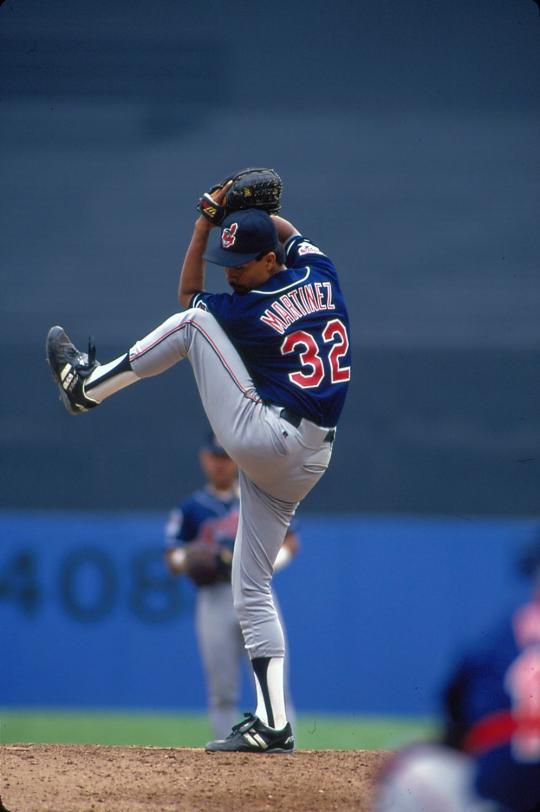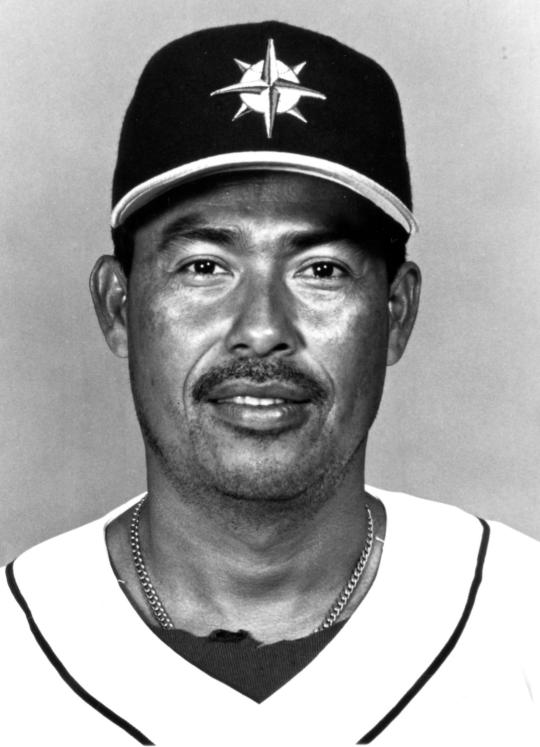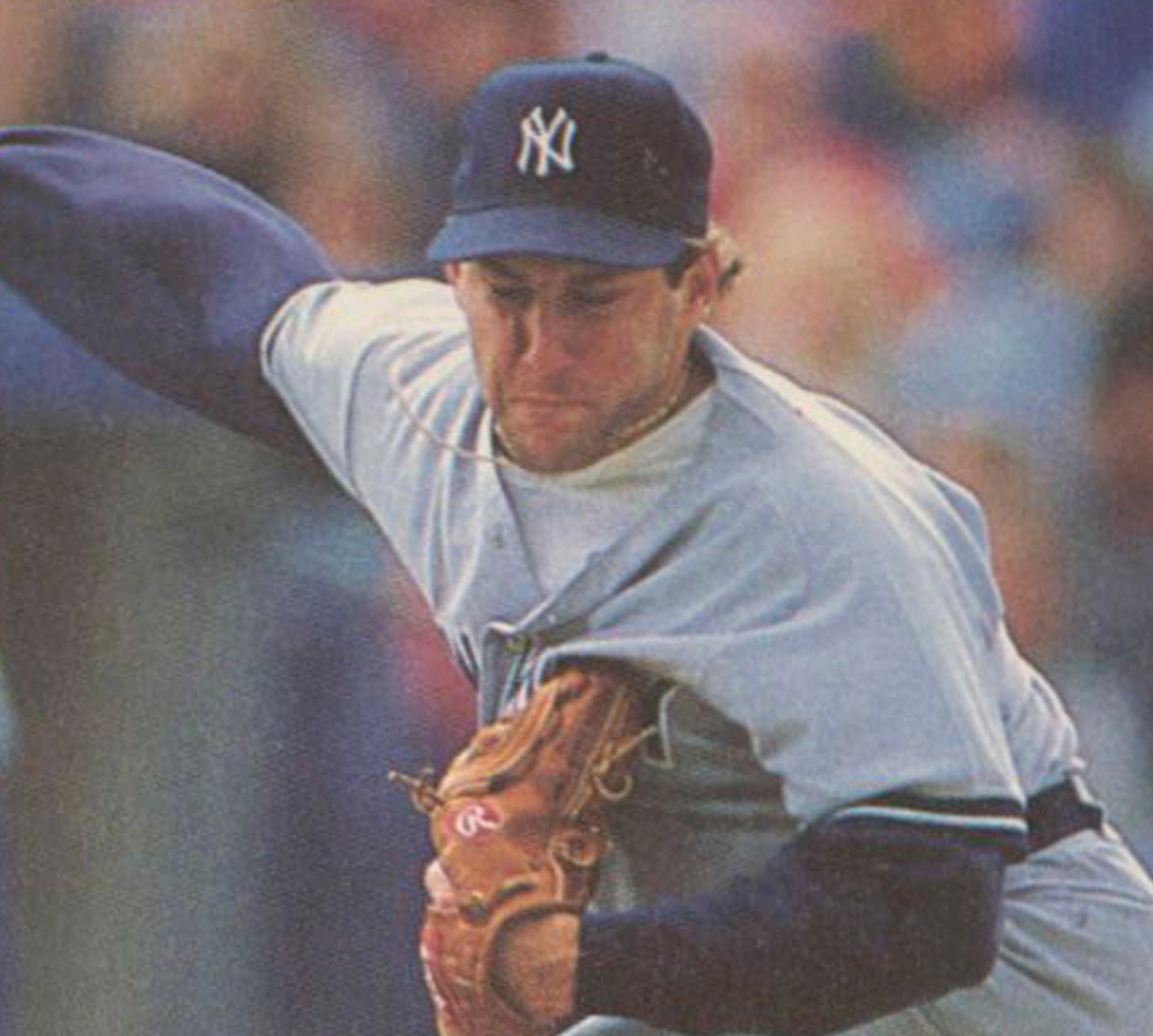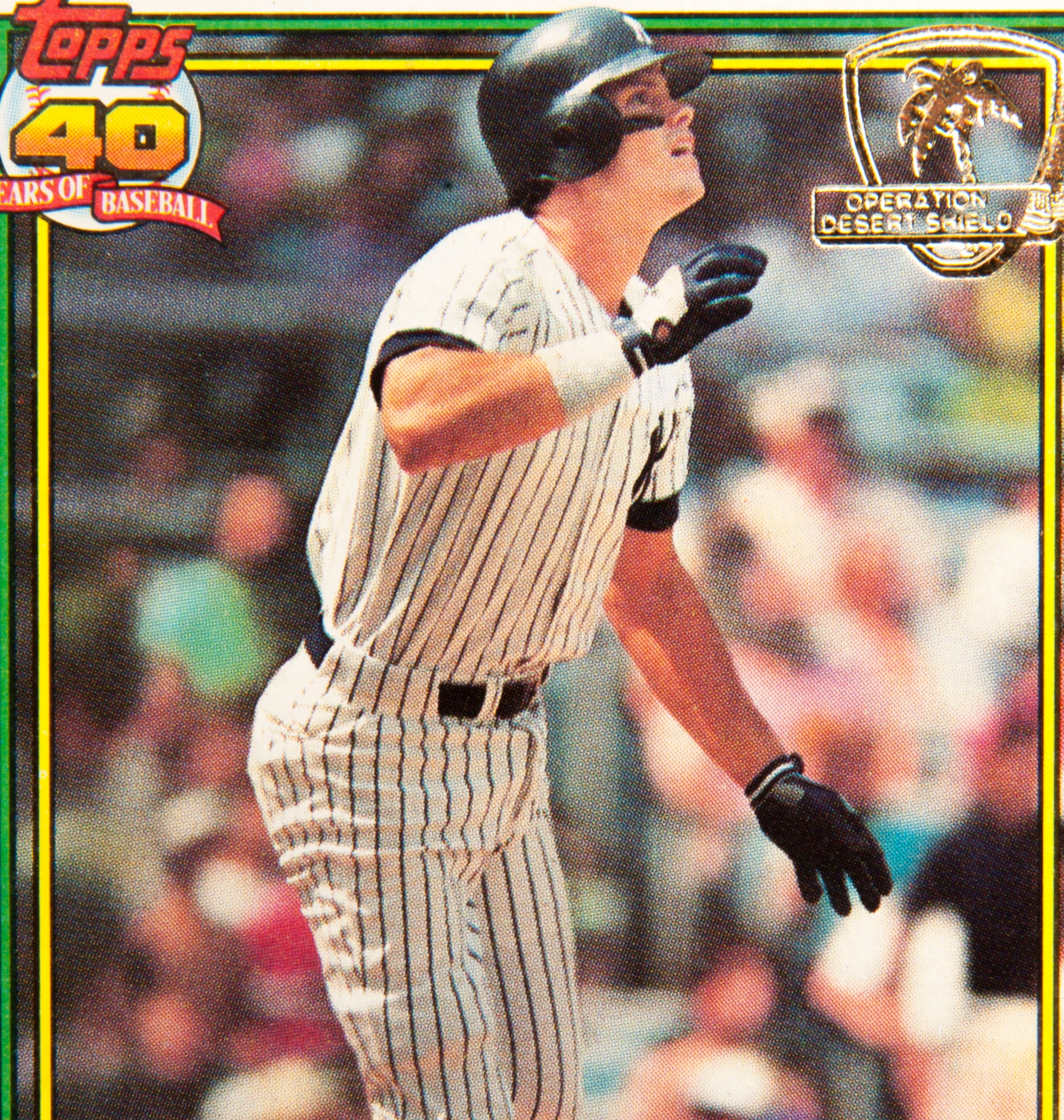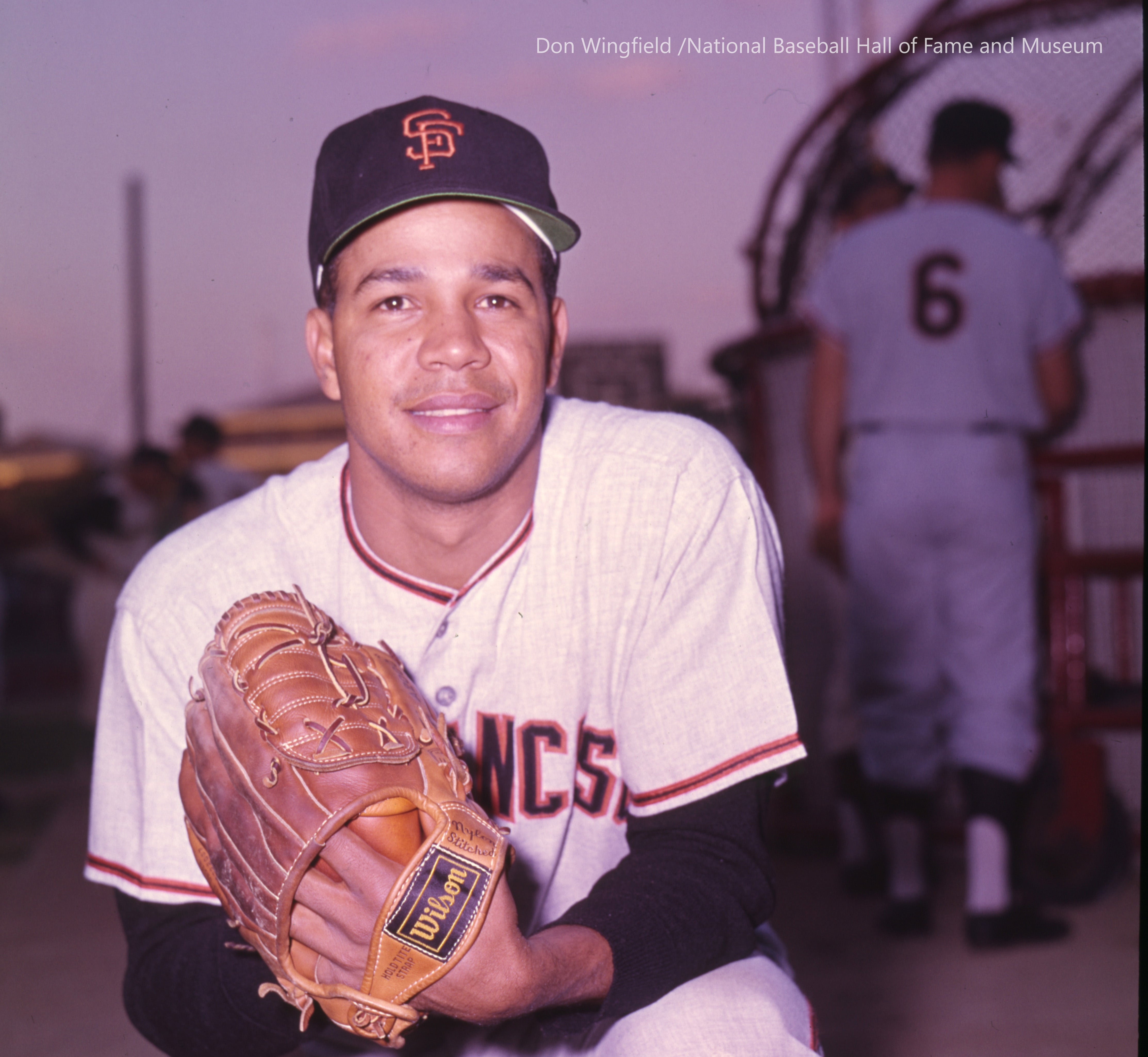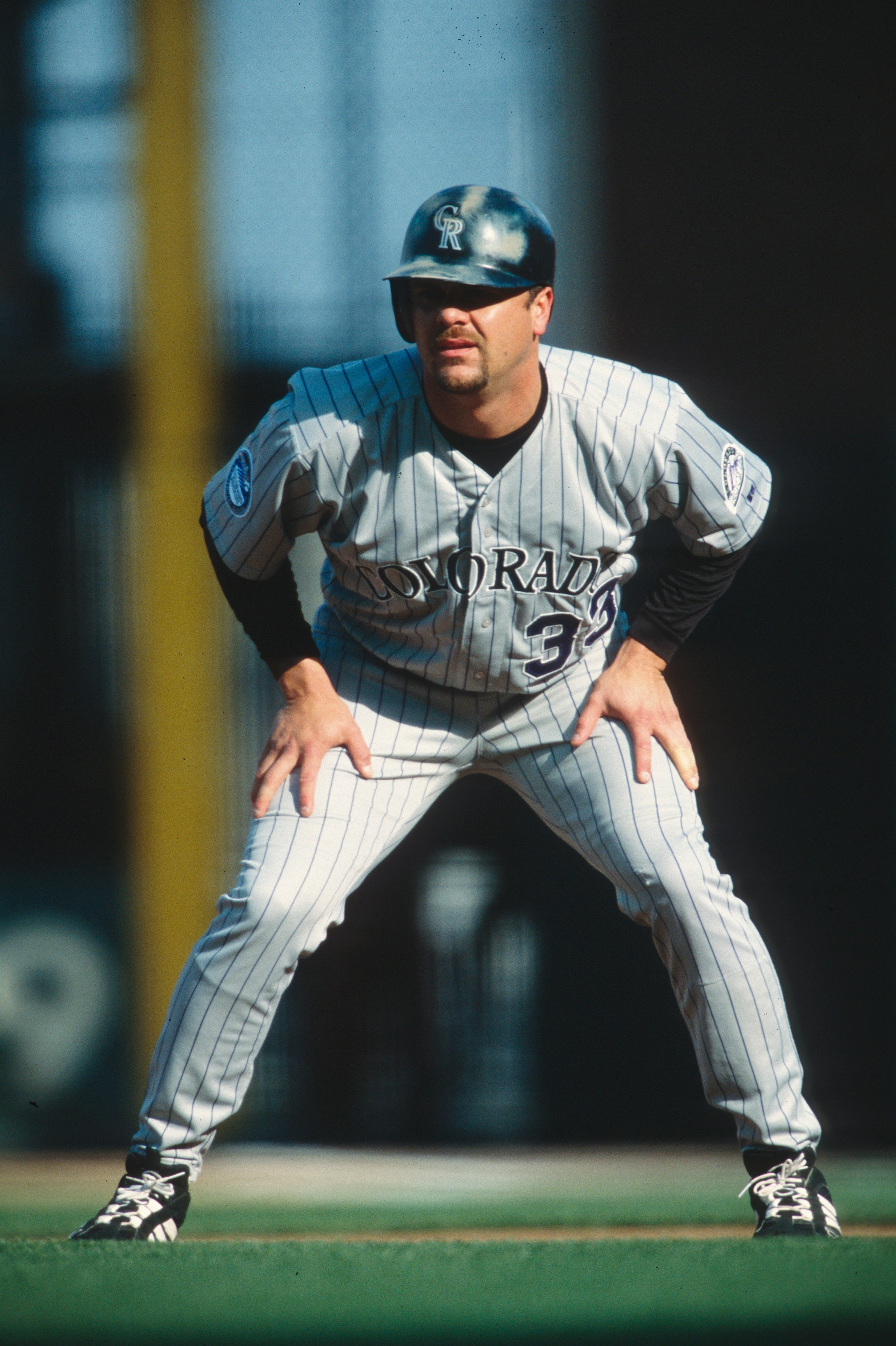- Home
- Our Stories
- #CardCorner: 1996 Topps Dennis Martínez
#CardCorner: 1996 Topps Dennis Martínez
He pitched in the big leagues well into his 40s, and yet time always seemed to be short for Dennis Martínez.
Starting with a non-traditional youth baseball experience….then strike-abbreviated seasons….and a late-blooming mastery of the game. All of these made the career of the first-ever Nicaraguan major leaguer seem more difficult than it should have been.
What it was, however, was nothing short of brilliant.
Official Hall of Fame Apparel
Proceeds from online store purchases help support our mission to preserve baseball history. Thank you!
Hall of Fame Membership
There is no simpler, and more essential, way to demonstrate your support than to sign on as a Museum Member.
Martínez’s 1996 Topps card shows him in his second season with the Cleveland Indians. Already in his 40s in 1995, Martínez was unquestionably the ace of an Indians team that went 100-44 and hit the baseball world like a tornado.
Martínez started the first game of both the ALDS and the ALCS that year, and was the Game 2 starter in the World Series against the Atlanta Braves. In the deciding Game 6 thriller, Martínez worked 4.2 scoreless innings, but Cleveland lost 1-0 on a sixth-inning home run by David Justice off reliever Jim Poole.
But a no-decision could not erase a season – and a career – filled with success for the gutty right-hander.
Martínez was believed to be born on May 14, 1955, in Granada, Nicaragua, though some put his birthdate a year earlier. He played with balls made of socks until he was well into his teens and began to play organized ball around 1971. By 1972, he was starring in international tournaments for Nicaraguan teams.
The Baltimore Orioles signed Martínez in December of 1973, but even the most optimistic scout could not predict big league success for the 6-foot-1, 135-pound right-hander. At that point, there had never been a Nicaraguan who had made it to the majors.
He began his pro career in 1974 with Class A Miami, and Martínez turned heads by going 15-6 with a 2.06 ERA in 25 starts. He returned to Miami to start the 1975 season, but by the end of the year he had ascended through Double-A and onto Triple-A with the Rochester Red Wings.
After going 14-8 with a 2.50 ERA with Rochester in 1976, Martínez earned a promotion to the big leagues – and he made his Orioles debut on Sept. 14, working 5.2 innings of scoreless relief in a 9-7 win over the Tigers. On the next-to-the-last day of the season, Martínez pitched a complete game, allowing just one run in eight innings in a 1-0 loss to the Red Sox.
“He’s another (Juan) Marichal,” Orioles pitching coach George Bamberger told the Detroit Free Press after Martínez’s big league debut. “Fastball, slider, curve, changeup – he can throw them all for strikes. And he has outstanding poise for a youngster.”
Martínez spent the 1977 season as a spot starter for the Orioles, going 14-7 with a 4.10 ERA in 166.2 innings, making 13 starts among his 42 appearances. He moved into Baltimore’s rotation in 1978, and in 1979 – the year the Orioles won the American League pennant – Martínez led the league in games started (39), complete games (18) and innings pitched (292.1) while going 15-16 with a 3.66 ERA.
A shoulder injury hampered Martínez in 1980, but in 1981 he went 14-5 – tying for the big league lead in wins during that shortened season – with a 3.32 ERA, earning a new five-year contract worth a little less than $3 million. But by 1983, Martínez’s simmering problems with alcohol hindered his on-field performance for an Orioles team that won the World Series. Martínez went 7-16 with a 5.53 ERA that year and did not appear in any of Baltimore’s postseason games.
After the season, however, Martínez sought treatment and began putting his life back on track.
On the field, he won 19 games over the next two seasons before the Orioles – seemingly giving up on their former workhorse – traded Martínez to the Expos on June 16, 1986.
The Orioles, who also sent catcher John Stefero to Montreal in the deal, received a player-to-be-named-later in the trade, who turned out to be Rene Gonzalez.
Martínez had been sent to Triple-A Rochester earlier that year, and was 2-1 with a 6.05 ERA in four starts for the Red Wings. But Expos scouts saw something in the 32-year-old Martínez that they thought was worth a flyer.
“He was scouted for us by Ralph Rowe (a former Orioles scout),” Expos general manager Murray Cook told the Montreal Gazette following the trade. “And Ralph thought he looked good in Rochester.”
Martínez went just 3-6 with the Expos in 1986, and – with his contract expiring during a winter where teams were later charged with colluding to keep free agents from signing – he found no offers from 1987. He sat out until May 1, when he was able to re-sign with the Expos. And in 22 starts that year, Martínez was 11-4 with a 3.30 ERA.
Suddenly, the pitcher that George Bamberger saw in 1976 re-emerged in full force.
Using all his pitches and hitting spots like the cagey veteran he was, Martínez went 15-13 with a 2.72 ERA in 1988. From 1988-93, Martínez won 86 games with a 2.92 ERA, averaging 228 innings a season and earning the first three All-Star Game appearances of his career.
In 1991, Martínez led the NL with a 2.39 ERA during a season where he pitched the 13th perfect game in big league history on July 28 against the Dodgers.
With the help of a couple fine defensive plays by Larry Walker – who was manning first base that day – Martínez entered the history books.
“This is big for me but also big for the team, for everyone who’s an Expo,” a teary-eyed Martínez told the Montreal Gazette following the game. “This was a team win. That’s how it’s supposed to be.”
Martínez signed a two-year, $9 million contract with the Indians following the 1993 season, and Martínez was 11-6 with a 3.52 ERA in 24 starts when the strike ended the season – and the hopes of the Indians to break their postseason drought. But in 1995, Cleveland was the toast of baseball – and Martínez was its ace. He went 12-5 with a 3.08 ERA over 187 innings, earning his fourth All-Star Game selection.
Age and an elbow injury slowed Martínez in 1996, though he won nine games for an Indians team that again advanced to the postseason. After becoming a free agent following the season, Martínez signed with the Mariners, but he went 1-5 with a 7.71 ERA in nine starts before being released on May 24.
He announced his retirement later that year, but came back in 1998 to pitch 53 games as a part-time starter and middle reliever for the Braves. With his third victory of the season, Martínez – who went 4-6 that year with a 4.45 ERA – passed Juan Marichal for first place on the list of wins by a Latin American pitcher.
He even appeared in four games in the NLCS that year, picking up a win in Game 4 of a series the Braves lost to the Padres 4-games-to-2.
Before the 1999 season started, Martínez again announced his retirement – this time for good.
He finished with a career record of 245-193, a 3.70 ERA and 2,149 strikeouts – and a nickname, El Presidente, that perfectly captured the status of a man who remains an icon in his home country and throughout much of the baseball world.
Craig Muder is the director of communications for the National Baseball Hall of Fame and Museum


